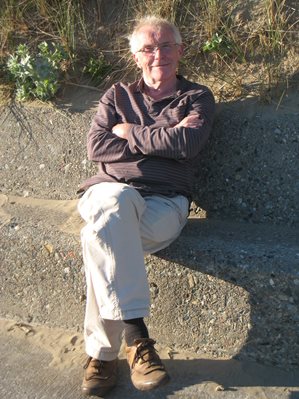- Home
- About Us
- Newsletters
- Meetings
- Membership
- Journal
- Scientific Interest Groups
- Helpful Links
In Memoriam, Vincent J. Cunningham 1946-2017 Vincent J. Cunningham passed away on December 20, 2017, after being diagnosed with ureteral cancer in the summer of 2016. He had been taken into the Macmillan Palliative Care Unit at the Northern General Hospital in Sheffield, U.K. a few days earlier, but his death was quite sudden and unexpected so soon. He was a dear friend and colleague to many in the ISCFBM community and will be remembered for his scientific intellect and dry sense of humor along with his unassuming and open collegiality. Vincent J. Cunningham passed away on December 20, 2017, after being diagnosed with ureteral cancer in the summer of 2016. He had been taken into the Macmillan Palliative Care Unit at the Northern General Hospital in Sheffield, U.K. a few days earlier, but his death was quite sudden and unexpected so soon. He was a dear friend and colleague to many in the ISCFBM community and will be remembered for his scientific intellect and dry sense of humor along with his unassuming and open collegiality.Vin was born and raised in Liverpool before winning a place to study Biochemistry at Oxford University in 1963. He graduated from Brasenose College in 1967 and immediately moved on to his Doctorate research in the Department of Biochemistry. His thesis was on lipid metabolism and he received his D.Phil. in 1971. He then moved to the Medical Research Council (MRC) Toxicology Unit at Carshalton and was soon running a research group. During this time he also obtained a first class degree in mathematics and taught it at the Open University. In fact, he was one of the first people to see the importance of combining mathematics and biology before the discipline of mathematical-biology became well recognised in the 1990’s. Inspired by Prof. Jill Cremer he became interested in the quantification of brain glucose utilization using tracer kinetics following Prof. Louis Sokoloff’s development of the autoradiographic technique to measure brain glucose consumption. Vin was extremely enthusiastic about this new discovery, and during this period made a fundamental contribution to the understanding of hexose transport across the blood-brain barrier. His experimental work anticipated future developments in tracer kinetic modelling for quantification of PET imaging. In 1988, Vin moved to the MRC Cyclotron Unit at the Hammersmith Hospital in London under the leadership of Prof Terry Jones, where he pioneered analytical approaches for the quantification of cerebral blood flow, glucose metabolism and receptor binding with dynamic PET imaging. This included seminal contributions to the modelling of glucose transport, reference tissue modelling that obviated the need for invasive arterial sampling in many receptor-imaging studies and basis-function methods, such as Spectral Analysis, that enabled data led quantitative parametric imaging of blood flow, metabolism and receptor binding. During this time, Vin also became Professor of Physiological Modelling at Imperial College London. Shortly after the Millennium, Vin took up the position of Director of Imaging Analysis at GSK as they embarked on building the world’s first clinical imaging centre embedded inside a pharmaceutical company to improve the process of drug development. Vin led the way to ensure that Pharma moved forward from studies that simply provided images, to those which delivered quantitative outcomes that delivered go-no-go outcomes for drug development. In 2010, he left GSK and took up a part-time post as Professor of Imaging at Aberdeen University before retiring in 2012, although he continued to be involved in research and publication until his death. During his career, he was an author of around 200 journal articles and was a strong advocate of ISCBFM, publishing regularly in JCBFM and also serving on the editorial board. Whilst being a dedicated and knowledgeable scientist with a great passion for his work, many will also remember him as a brilliant and patient teacher. He had a strong influence on many scientific careers, and was beyond generous with his investment in time for others. His unique supervisory style was one that he defined as “not much - just making tea”, which was based on an open door policy where anyone could pop by to discuss everything from science to politics. Those who had the privilege of working with him will never forget his critical and constructive thinking which belied the impressive modesty of the brilliant man he was. Vin leaves behind his loving wife Gill and his children James, Mathew and Anna. Roger N. Gunn, Ph.D. Anna M. Planas, Ph.D. |
